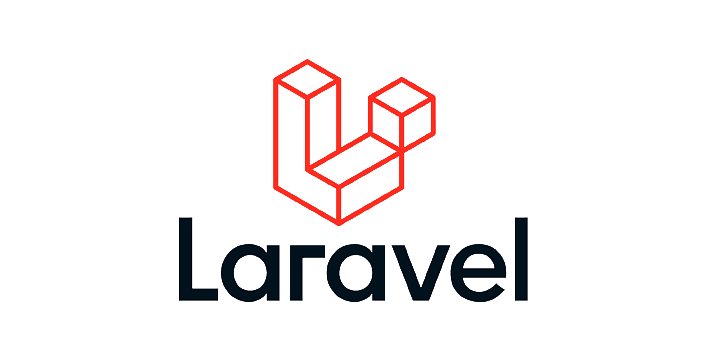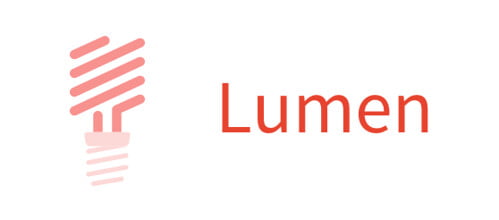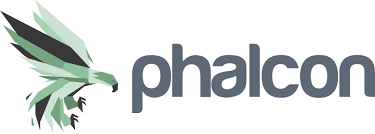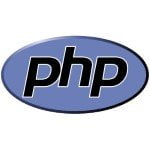5 Popular PHP REST API Frameworks
PHP (Hypertext Preprocessor) is a server-side scripting language used for web development. PHP is open-source, free, and widely used for developing dynamic web pages, web applications, and web services.
Some key features of PHP include:
- Cross-platform compatibility: PHP can run on multiple operating systems, including Windows, Linux, macOS, and many others.
- Simple and easy to learn: PHP has a simple and easy-to-understand syntax that is similar to C and Java programming languages. It also has a vast community that provides numerous resources for learning and development.
- Powerful database support: PHP has excellent support for various databases like MySQL, Oracle, PostgreSQL, SQLite, and others.
- Extensive library support: PHP has a vast library of functions and extensions that can be used to build complex web applications and services.
- Server-side scripting: PHP is a server-side scripting language, which means it runs on the server and generates dynamic HTML pages that are sent to the client.
- Easy integration with HTML and CSS: PHP can easily integrate with HTML and CSS, making it simple to create dynamic and interactive web pages.
- Open-source: PHP is open-source, which means it is free to use, distribute, and modify.
PHP is widely used for developing dynamic web pages, web applications, and web services. Some popular content management systems like WordPress, Drupal, and Joomla are built with PHP. Additionally, PHP is used in eCommerce platforms, social media applications, forums, and many other web-based applications.
In summary, PHP is a versatile and powerful programming language for web development. It is widely used, simple to learn, has powerful database support, and has an extensive library of functions and extensions. With PHP, developers can create dynamic, interactive, and scalable web applications and services.
1. 5 PHP REST API Frameworks
1.1 Laravel
Laravel is a popular open-source PHP web application framework that was first released in 2011. It was created by Taylor Otwell to provide developers with a simple, elegant, and efficient way to build web applications.
Laravel follows the Model-View-Controller (MVC) architectural pattern, which separates the application into three interconnected components: the model (database), the view (user interface), and the controller (business logic). This makes it easier for developers to manage and maintain their codebase.
Laravel comes with a range of features out-of-the-box, including built-in support for authentication, routing, middleware, and templating. It also has a powerful object-relational mapping (ORM) system called Eloquent, which allows developers to work with databases using intuitive and expressive syntax.
Laravel has a large and active community of developers, which means there are many third-party packages and libraries available to extend the framework’s capabilities. Additionally, Laravel has a strong focus on testing and comes with support for unit testing and functional testing.
Overall, Laravel is a robust and feature-rich framework that has become a popular choice for building web applications due to its simplicity, ease of use, and extensive documentation.
Some key features of Laravel include:
- Routing: Laravel provides a simple and intuitive way to define application routes. It supports both simple and complex routing scenarios and allows developers to define route parameters, middleware, and other options.
- Eloquent ORM: Laravel’s Eloquent ORM provides a simple and expressive way to work with databases. It allows developers to define database models using PHP code and provides a range of features such as relationship management, query building, and data validation.
- Blade templating engine: Laravel’s Blade templating engine provides a clean, simple, and powerful way to create HTML templates. It supports template inheritance, conditional statements, loops, and other features.
- Artisan CLI: Laravel comes with a command-line interface called Artisan, which provides a range of commands for common development tasks. This includes generating boilerplate code, running database migrations, and running tests.
- Authentication and authorization: Laravel provides built-in support for user authentication and authorization. It includes features such as user registration, login, password reset, and email verification.
- Middleware: Laravel’s middleware feature allows developers to filter HTTP requests and responses. This can be used for tasks such as authentication, caching, and logging.
- Events and listeners: Laravel provides a simple and powerful way to implement event-driven programming. It includes an event system that allows developers to define custom events and listeners.
- Queues: Laravel provides a simple way to manage background jobs using queues. This can be used for tasks such as sending emails, generating reports, and processing large amounts of data.
Pros of Laravel:
- Laravel has a large and active community, which means there are many third-party packages and libraries available to extend the framework’s capabilities.
- Laravel has a well-designed architecture that follows modern software development principles and patterns.
- Laravel provides built-in support for common tasks such as authentication, routing, and database management.
- Laravel has a powerful ORM system called Eloquent, which makes it easy to work with databases.
- Laravel has a simple and expressive syntax that makes it easy to learn and use.
- Laravel provides a range of features for testing and debugging, making it easy to ensure that code is working as intended.
- Laravel has a modular structure that allows developers to easily add or remove components as needed.
- Laravel is constantly being updated and improved, with regular releases that provide new features and bug fixes.
Cons of Laravel:
- Laravel can be slower than other PHP frameworks due to its heavy use of abstraction and its reliance on external libraries.
- Laravel can be difficult to learn for developers who are not familiar with modern PHP development principles and patterns.
- Laravel’s reliance on external libraries can make it difficult to manage dependencies and ensure compatibility with other components.
- Laravel’s modular structure can make it difficult to maintain large codebases, especially if components are poorly documented or poorly maintained.
- Laravel’s built-in features and conventions can be restrictive for some developers who prefer more flexibility and control over their code.
1.2 Symfony
Symfony is a popular open-source PHP web application framework that was first released in 2005. It was created by Fabien Potencier to provide developers with a set of reusable and decoupled components that can be used to build web applications.
Symfony follows the Model-View-Controller (MVC) architectural pattern, which separates the application into three interconnected components: the model (database), the view (user interface), and the controller (business logic). This makes it easier for developers to manage and maintain their codebase.
Symfony provides a range of features out-of-the-box, including routing, templating, and form handling. It also has a powerful object-relational mapping (ORM) system called Doctrine, which allows developers to work with databases using intuitive and expressive syntax.
Symfony has a large and active community of developers, which means there are many third-party packages and libraries available to extend the framework’s capabilities. Additionally, Symfony has a strong focus on testing and comes with support for unit testing and functional testing.
Overall, Symfony is a robust and feature-rich framework that has become a popular choice for building web applications due to its flexibility, scalability, and extensive documentation.
Some key features of Symfony include:
- Reusable and decoupled components: Symfony is built on a set of reusable and decoupled components that can be used independently or as part of a larger framework. This makes it easy to reuse code and reduce development time.
- Routing: Symfony provides a flexible and powerful routing system that allows developers to define complex URL patterns and route parameters. It also supports advanced routing scenarios such as subdomains and content negotiation.
- Twig templating engine: Symfony uses the Twig templating engine, which provides a clean, simple, and powerful way to create HTML templates. It supports template inheritance, conditional statements, loops, and other features.
- Doctrine ORM: Symfony’s Doctrine ORM provides a simple and expressive way to work with databases. It allows developers to define database models using PHP code and provides a range of features such as relationship management, query building, and data validation.
- Forms: Symfony provides a powerful form handling system that makes it easy to create and validate forms. It includes built-in support for common form types such as text fields, checkboxes, and radio buttons.
- Security: Symfony provides built-in support for user authentication and authorization. It includes features such as user registration, login, password reset, and access control.
- Console: Symfony includes a command-line interface (CLI) called the Console component, which provides a range of commands for common development tasks. This includes generating boilerplate code, running database migrations, and running tests.
- Testing: Symfony has a strong focus on testing and comes with support for unit testing and functional testing. It also includes tools for test automation, such as fixtures for generating test data.
- Internationalization and localization: Symfony provides built-in support for internationalization and localization. This includes features such as translation management, date and time formatting, and number formatting.
Pros of Symfony:
- Symfony provides a wide range of features and components, making it a flexible and versatile framework for building web applications.
- Symfony follows best practices and design patterns, such as the Model-View-Controller (MVC) pattern, which makes it easy to maintain and scale applications.
- Symfony has a large and active community, which means there are many third-party bundles and libraries available to extend the framework’s capabilities.
- Symfony has a strong focus on testing and comes with built-in support for unit testing and functional testing.
- Symfony provides a robust security system that includes features such as authentication, authorization, and encryption.
- Symfony has excellent documentation, which makes it easy for developers to learn and use the framework.
- Symfony has a strong commitment to backward compatibility, which means that code written for older versions of Symfony can be easily migrated to newer versions.
Cons of Symfony:
- Symfony has a steep learning curve, especially for developers who are new to the framework or to modern PHP development practices.
- Symfony can be resource-intensive and may require more memory and processing power than other PHP frameworks.
- Symfony’s large and complex codebase can make it difficult to maintain and debug applications, especially for developers with limited experience.
- Symfony’s built-in features and conventions can be restrictive for some developers who prefer more flexibility and control over their code.
- Symfony’s performance may be lower than other PHP frameworks for certain types of applications or in certain use cases.
1.3 Slim
Slim is a lightweight open-source PHP micro-framework that was first released in 2010. It was created by Josh Lockhart to provide developers with a simple and minimalistic framework for building web applications.
Slim follows the Model-View-Controller (MVC) architectural pattern, which separates the application into three interconnected components: the model (database), the view (user interface), and the controller (business logic). However, Slim is designed to be lightweight and flexible, which means that it does not include many of the features and components that come with larger frameworks such as Laravel or Symfony.
Some key features of Slim include:
- Routing: Slim provides a simple and intuitive routing system that allows developers to define URL patterns and route parameters.
- Middleware: Slim uses middleware to handle requests and responses. This makes it easy to add functionality such as authentication, logging, or caching to the application.
- Views: Slim supports a range of template engines such as Twig and Mustache, which allow developers to create HTML templates.
- Dependency injection: Slim has a built-in dependency injection container that allows developers to manage and organize application dependencies.
- Testing: Slim includes built-in support for unit testing and functional testing. It also supports test automation tools such as PHPUnit.
Overall, Slim is a lightweight and flexible framework that is ideal for building small to medium-sized web applications. Its simplicity and ease of use make it a popular choice for developers who prefer a minimalist approach to web development. However, its lack of built-in features and components may make it less suitable for larger and more complex applications.
Pros of Slim:
- Lightweight and fast: Slim is a lightweight and minimalistic framework that requires fewer resources than larger frameworks. This means that Slim can handle a high volume of requests with minimal overhead.
- Simple and intuitive: Slim has a simple and intuitive syntax that makes it easy to learn and use. This is particularly beneficial for developers who are new to PHP frameworks or who prefer a minimalist approach to web development.
- Flexible and customizable: Slim is designed to be flexible and customizable, which means that developers can add or remove components as needed. This allows developers to build applications that are tailored to their specific needs.
- Middleware: Slim’s middleware system allows developers to add functionality to their application without having to modify the core code. This makes it easy to add features such as authentication, logging, or caching.
- Testing: Slim has built-in support for testing, which makes it easy for developers to write and run unit tests and functional tests. This helps to ensure that the application is reliable and bug-free.
Cons of Slim:
- Limited functionality: Slim is a minimalistic framework that does not include many of the features and components that come with larger frameworks such as Laravel or Symfony. This means that developers may need to implement certain features themselves or use third-party libraries.
- Steep learning curve: Although Slim has a simple and intuitive syntax, it can still have a steep learning curve for developers who are new to PHP frameworks. This is particularly true for developers who are not familiar with the MVC architectural pattern.
- Limited community support: Slim has a smaller community than larger frameworks such as Laravel or Symfony, which means that there may be fewer resources and less community support available.
- Limited documentation: Although Slim has good documentation, it may not be as comprehensive as the documentation for larger frameworks. This can make it more difficult for developers to learn and use Slim effectively.
- Not suitable for large-scale applications: Slim is designed for building small to medium-sized applications and may not be suitable for large-scale applications. Developers may need to use a larger framework such as Laravel or Symfony for these types of applications.
1.4 Lumen
Lumen is a lightweight open-source PHP micro-framework created by Taylor Otwell, the creator of Laravel. Lumen was first released in 2015 as a way to provide developers with a lightweight and fast framework for building microservices and APIs.
Lumen is built on top of the Laravel components, which means that it inherits many of the features and components of Laravel. However, Lumen is designed to be lighter and faster than Laravel, with a smaller footprint and reduced overhead.
Some key features of Lumen include:
- Routing: Lumen provides a simple and intuitive routing system that allows developers to define URL patterns and route parameters.
- Middleware: Lumen uses middleware to handle requests and responses. This makes it easy to add functionality such as authentication, logging, or caching to the application.
- Artisan CLI: Lumen includes the Artisan CLI tool, which provides a range of useful commands for managing the application, generating code, and running tests.
- Blade templating: Lumen supports the Blade templating engine, which allows developers to create HTML templates.
- Eloquent ORM: Lumen includes the Eloquent ORM, which provides a simple and intuitive way to interact with databases.
Overall, Lumen is a lightweight and fast framework that is ideal for building microservices and APIs. Its simplicity and ease of use make it a popular choice for developers who prefer a minimalist approach to web development. However, its lack of built-in features and components may make it less suitable for larger and more complex applications.
Pros of Lumen:
- Lightweight and fast: Lumen is designed to be lightweight and fast, with a smaller footprint and reduced overhead compared to Laravel.
- Simple and intuitive: Lumen has a simple and intuitive syntax that makes it easy to learn and use. This is particularly beneficial for developers who are new to PHP frameworks or who prefer a minimalist approach to web development.
- API-focused: Lumen is designed specifically for building microservices and APIs, which means that it has features and components that are tailored to these use cases.
- Eloquent ORM: Lumen includes the Eloquent ORM, which provides a simple and intuitive way to interact with databases.
- Artisan CLI: Lumen includes the Artisan CLI tool, which provides a range of useful commands for managing the application, generating code, and running tests.
Cons of Lumen:
- Limited functionality: Lumen is a lightweight framework that does not include many of the features and components that come with larger frameworks such as Laravel. This means that developers may need to implement certain features themselves or use third-party libraries.
- Limited community support: Lumen has a smaller community than larger frameworks such as Laravel, which means that there may be fewer resources and less community support available.
- Steep learning curve: Although Lumen has a simple and intuitive syntax, it can still have a steep learning curve for developers who are new to PHP frameworks.
- Limited documentation: Although Lumen has good documentation, it may not be as comprehensive as the documentation for larger frameworks. This can make it more difficult for developers to learn and use Lumen effectively.
- Not suitable for large-scale applications: Lumen is designed for building microservices and APIs, and may not be suitable for larger and more complex applications. Developers may need to use a larger framework such as Laravel for these types of applications.
1.5 Phalcon
Phalcon is a PHP web framework that was first released in 2012. It is an open-source framework that is written in C and is designed to be fast and efficient. Phalcon’s unique architecture allows it to run at high speeds while maintaining a low memory footprint.
Some key features of Phalcon include:
- High Performance: Phalcon is designed to be fast and efficient. Its architecture is optimized for speed, and it uses memory more efficiently than many other PHP frameworks.
- MVC Pattern: Phalcon follows the Model-View-Controller (MVC) pattern, which makes it easy for developers to separate their application’s logic from its presentation.
- C Extension: Phalcon is written in C, which means that it is compiled and loaded as a PHP extension. This allows it to run faster than frameworks that are written in PHP.
- Dependency Injection: Phalcon supports dependency injection, which makes it easy for developers to manage their application’s dependencies.
- Security: Phalcon includes built-in security features such as cross-site scripting (XSS) protection, input validation, and secure sessions.
Overall, Phalcon is a fast and efficient framework that is ideal for building high-performance web applications. Its unique architecture and C extension make it one of the fastest PHP frameworks available. However, its use of C may make it more difficult for some developers to work with, and its smaller community may make it harder to find resources and support.
Pros of Phalcon:
- High Performance: Phalcon is one of the fastest PHP frameworks available, thanks to its unique architecture and use of a C extension.
- MVC Pattern: Phalcon follows the Model-View-Controller (MVC) pattern, which makes it easy for developers to separate their application’s logic from its presentation.
- C Extension: Phalcon’s use of a C extension allows it to run faster and more efficiently than frameworks that are written in PHP.
- Security: Phalcon includes built-in security features such as cross-site scripting (XSS) protection, input validation, and secure sessions.
- Easy to Learn: Phalcon has a simple and intuitive syntax, which makes it easy for developers to learn and use.
Cons of Phalcon:
- Smaller Community: Phalcon has a smaller community than many other PHP frameworks, which may make it harder to find resources and support.
- Use of C: Phalcon’s use of a C extension may make it more difficult for some developers to work with.
- Limited Third-Party Libraries: Phalcon has fewer third-party libraries and plugins than larger frameworks such as Laravel or Symfony.
- Less Documentation: Phalcon’s documentation is not as comprehensive as the documentation for larger frameworks, which may make it more difficult for developers to learn and use effectively.
- Not Suitable for All Applications: Phalcon’s focus on performance may make it less suitable for applications that require extensive features or functionality.
2. Conclusion
In conclusion, PHP REST API frameworks are a popular choice for building web services that follow the REST architectural style. Laravel, Symfony, Slim, Lumen, and Phalcon are all popular PHP frameworks that offer different features and benefits.
Laravel is a full-stack framework that offers a range of features for building web applications, including RESTful APIs. It has a large and active community, extensive documentation, and a wide range of third-party packages and plugins.
Symfony is another popular full-stack framework that offers many features and benefits, including robust security features, flexibility, and scalability. It also has a large and active community and extensive documentation.
Slim is a lightweight micro-framework that is ideal for building small-scale web applications, including RESTful APIs. It is fast and easy to learn, with a simple and intuitive syntax.
Lumen is a micro-framework based on Laravel that is designed specifically for building APIs and microservices. It is fast and lightweight, with a simple and intuitive syntax.
Phalcon is a fast and efficient framework that is ideal for building high-performance web applications. Its unique architecture and use of a C extension make it one of the fastest PHP frameworks available.
Ultimately, the choice of a PHP REST API framework it’s up to you and depends on the specific needs and requirements of the project, as well as the experience and preferences of the development team.










Would it be possible to review this article, please?
I was excited to learn about PHP frameworks that make it easier to implement REST services, but it seems that the article only focuses on 5 PHP frameworks. For example, API Platform, which is a reference in this field, is not mentioned. Perhaps it would be wise to remove the mention of REST in the title and refocus the article on the 5 PHP frameworks presented? I’m sure that would be more clear and useful to your readers.
I noticed that Fat Free Framework is not included in the list of frameworks. Fat Free Framework is an ultra-lightweight PHP micro-framework that has many advantages. It is extremely lightweight, with a file size of only 55KB. It also has a gentle learning curve, allowing developers to focus on what matters without having to change their coding style. Additionally, it offers many of the functionalities that mature, full-fledged frameworks have. We have been using Fat Free Framework successfully for all kinds of project sizes and I highly recommend it
Codeigniter left out